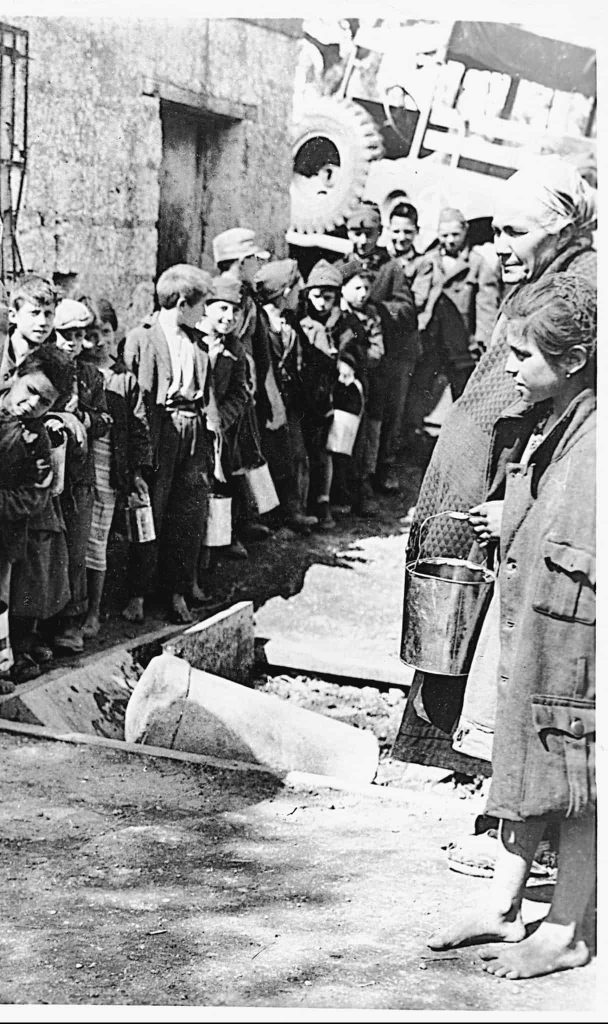“The greatest gift we can give to others is not material possessions, but the gift of ourselves. It is through our love and service that we can truly make a difference in the world.”
Mother Frances Xavier Cabrini
On July 15th 1850, Frances Cabrini’s infant cries greeted the world. Few of her siblings lived past their teenage years; so her parents baptized her the same day she was born. Frail from birth, Frances faced multiple health complications. Her lungs were compromised by a near-drowning experience. She never exceeded five feet in stature, but she didn’t need to.
Her ambitious spirit drove her to dream of evangelizing China. Frances was certain that God was calling her to serve Him as a religious missionary, but her poor health kept her in Italy…and out of the monastery.
The children loved her and she loved the children.
Frances began to teach in a small village. The children loved the tiny instructor, and news of her kindness and competence spread. Her reputation attracted the bishop of Piacenza. He was in need of her skills at an orphanage called the House of Providence.
At the orphanage, Frances proved to be a talented administrator, and the House of Providence expanded its services towards the wider community. They offered retreats, provided adult education and even coordinated youth gatherings.
After years of yearning, Frances joined the Sisters of Providence – a religious order that was in charge of the orphanage. She adopted the name Saveria (Xavier) after a Jesuit missionary who had traveled east to China and Japan.
This marked the beginning of an incredibly difficult period in her life. Due to constant harassment from a superior, Frances fled to Christ in prayer where she received much consolation from his most Sacred Heart. It was there she learned to trust in God beyond all her wants.
“Give me the desire to humble myself for your love. Enlighten me how to do so when humiliating occasions present themselves. When I do not feel inclined to follow your holy inspirations, help me to do so.”
Saint Frances Cabrini
At the age of 30, Frances was entrusted with the task of forming a new religious order. So began the Missionary Sisters of the Sacred Heart of Jesus.
Not to the east, but to the west
Meanwhile, Pope Leo XIII faced a crisis. He had received reports that the sons of Italy faced deep prejudice not only from the people in America, but from the clergy themselves who limited their access to the sacramental worship. It is a dreadful thing to be Catholic without access to the holy sacraments!
In 1888, the Pope published his encyclical Quam Aerumnosa (On Italian Immigrants) in which he pledged to send Italian missionaries to assist their brethren. He requested that the American clergy graciously receive the missionaries.

“Nor do we doubt that these will be received by you with fatherly affection, and will obtain the necessary faculties for the sacred ministry to their countrymen…behold they come to you as helpers, that, under the authority of each of you in whose diocese they are working, they may give their best aid in the holy warfare.” (Pope Leo XIII, Quam Aerumnosa)
Shortly after sending the letter, the Pope received a request for an audience from a woman. It was Mother Cabrini. She wished to go to China as a missionary, but the Pope responded, “Not to the east, but to the west.” He wanted her to go to New York.
An empire of hope
In the concrete jungle of New York, men such as Rockefeller and Vanderbilt constructed skyscrapers that rivaled the tower of Babylon. In their shadows lived a suffering minority: families crammed in small apartments and parents working poor-paying jobs with long hours. Famished and uneducated, the children were doomed to equally dismal lives.
After braving her fear of the ocean, Mother Cabrini landed in New York alongside six of her religious sisters. They faced immediate rejection from the American priests who told them to go back to Italy. Obedient to her mission, Mother Cabrini refused.
“Oh, my daughters, have great confidence in the Holy Spirit! He can soften the hardest hearts, pacify the rebellious, sweeten embittered souls…”
Saint Frances Cabrini
She began by establishing catechism classes and schooling for the children. On the first day, Mother Cabrini enrolled 200 children. Her order held great confidence in the Holy Spirit and entrusted all the funding to Him – who provided it in abundance and sometimes last minute. Soon they had established several parochial schools, an orphanage and even a hospital.
“It was a new sight for the Italians of this city. We saw genuine joy shine in them all…” wrote Frances Cabrini.
Although the immigrant sisters faced several limitations, Mother Cabrini remained obedient to God and served in whatever way she could. Constantly, she would entreat her sisters to “endeavor to be very humble, for if even a little pride nestles in our hearts we shall never be able to understand spiritual things.”
Other cities from across the United States, Europe and South America began to beckon for her help. The little woman obliged. She traveled throughout the nations serving the immigrant and caring for the orphan. 67 hospitals, orphanages and schools were established in 34 years.
In 1909, Mother Cabrini became a citizen of the United States. She recounted in her letters regarding the country that “there is much to admire and for which to thank God, who has let fall on earth rays of His infinite beauty and power.” In 1917 she died of endocarditis and was canonized in 1946 by Pope Pius XII. She was gifted the title, “Patroness of Immigrants.”
Have you seen the movie? We’d love to hear your thoughts! Email kbambock@wr.org.
Make an impact and create welcome.
